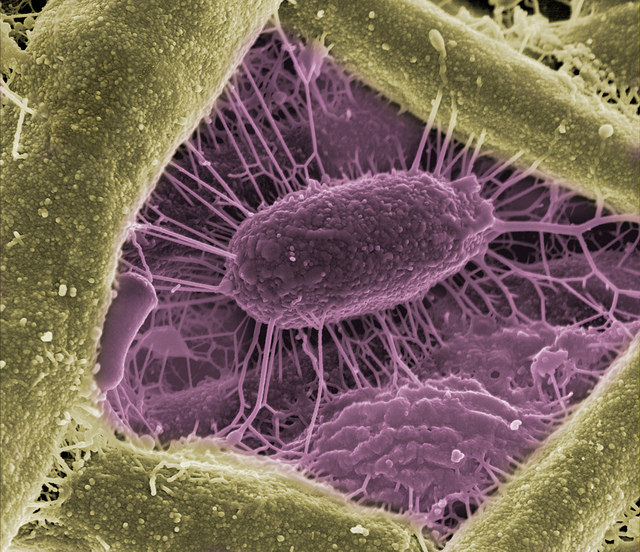Beauty of science displayed in annual PNNL calendar

A dozen colorful images captured during research are featured
Enjoying the beauty of science year-round is easy with a new digital calendar and computer wallpaper containing captivating images that illustrate research at the Department of Energy's Pacific Northwest National Laboratory.
The 2016 calendar and wallpaper feature 12 colorful images, including close-up views of materials under a microscope and visualized computational modeling results. The images — which showcase everything from bacteria to batteries — are the result of PNNL's diverse research, including biofuels, energy storage, cybersecurity and biological threat detection.
For example, the month of November shows a magnified microbe growing a on a plant root. The image was collected while PNNL scientists studied the carbon cycle among soil, roots and microogranisms. The research could one day lead to solutions for climate and environmental challenges.
PNNL chose the dozen images from more than 60 nominations that were submitted in 2015 by its staff. This is the fifth year in a row the national laboratory has produced a scientific art calendar.
To download a calendar or wallpaper, go to the 2016 Science as Art Calendar website. The images can also be seen on PNNL's Flickr account.

 How to resolve AdBlock issue?
How to resolve AdBlock issue?